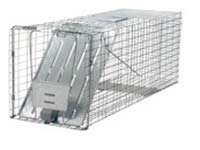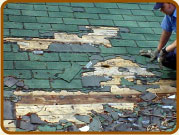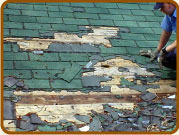 This is a re-post of an article I read on Market Watch about Making Money off Blogging. It is re-posted here in it’s entirety. We posted this article here since many of our friends wonder about what Adsense and blogging is all about and why would I spend so much time working on something like this. It is foreign to the entire concept of going to an office, getting a paycheck and not working for your self. I thought that maybe they would see this and understand a little bit more why I blog:
This is a re-post of an article I read on Market Watch about Making Money off Blogging. It is re-posted here in it’s entirety. We posted this article here since many of our friends wonder about what Adsense and blogging is all about and why would I spend so much time working on something like this. It is foreign to the entire concept of going to an office, getting a paycheck and not working for your self. I thought that maybe they would see this and understand a little bit more why I blog:
Jan. 12, 2011, 12:01 a.m. EST
Making Money off Blogging
Successful bloggers describe how they made a go of it
By Marty Orge
SAN FRANCISCO (MarketWatch) — Blogs are an ever-growing presence on the Internet, but can you make money in this crowded field? Certainly, some people do, and a big part of their success is choosing the right topic to write about — and then sticking to it until the audience, and advertisers, come.
There were 126 million blogs on the Internet in 2009, the most recent figure available, according to Pingdom.com, which tracks Internet growth. Some provide a healthy income for their authors.
Start with passion, and the money will follow, said Joel Comm, a new-media marketing strategist in Loveland, Colo., and author of “KaChing: How to Run an Online Business that Pays and Pays.â€
“Niche is the way to go, and micro-niche is even better,†Comm said. “To be successful with a blog you need to find your passion.†Successful bloggers want to write about whatever they’re passionate about, he said, even if they don’t get paid.
For example, if you love dogs, there’s a niche. “I’m partial to Yorkshire Terriers,†Comm said, “so I could blog about Yorkies, defining my niche even more,†he said. “Find a topic where you can display your knowledge and become the blogging expert about it.â€
Not always about the cash
For Neal Schaffer, who earns $100 a month from blogging and gets 20,000 visitors each month, it’s not about the money. Blogging is a way to attract potential clients.
Schaffer is president of Windmills Marketing in Newport Beach, Calif. He blogs about social-media strategies for professionals and businesses at WindMillNetworking.com.“Because I built a trustworthy relationship, people reading my blog are ready to purchase services I offer. Blogging is free advertising for my business,†he said. “It is in my consulting and speaking business where I make a living.â€
Schaffer uses Google AdSense and affiliate marketing programs. Google offers AdSense, which delivers ads, free to site owners and bloggers. Payment is usually based on how many visitors come to the site or click on the ads. Affiliate marketing programs pay bloggers when visitors click on their proprietary ads.
Praveen Puri
is a financial and software blogger in Aurora, Ill., and author of “Stock Trading Riches.†He earns an average of $250 a month from four blogs, including Simple-Trading-System.blogspot.com and unix-simple.blogspot.com.
“I make about $50 from selling my books on my blogs, $10 from Amazon affiliate sales, $140 from sponsored posts through PayPerPost.com, Blogertise.com and SocialSpark.com, and $50 from selling paid links directly to advertisers,†he said. “I work on my blogs about 16 hours a week.â€
Long hours and minimal income don’t deter Puri. For him, blogging is like a hobby. “Most hobbies cost money,†he said. “With blogging, I’m enjoying a fun hobby where I’m actually making more than I have to pay out.â€
Puri said his blogs also help him gain credibility as a source on Unix programming and financial investing. And he does want to see a bigger payoff from his blogging. “There is the hope that I will eventually make a breakthrough where one or more of my blogs or posts go viral and exponentially create a big audience where I could make more money.â€
Marc Matsumoto,
a New York-based editor and publisher of the food blog NoRecipes.com, said he makes $1,000 a month in blog ad revenue and gets 160,000 visitors to his blog a month.
But his blog serves as the gateway to other income. Matsumoto said he has gotten paid recipe-development jobs for periodicals, books, and packaged-goods companies from his blog. “I’ve also gotten paid food-photography gigs primarily for packaged-goods companies. Almost 100% of my leads come through my blog,†he said.
“I work 40 to 50 hours a week on purely blog-related activities,†he said. “I left a job as a marketing executive three months ago to pursue the blog and work on it full-time. A blog is a portfolio piece that helps you build your brand and secure other work.â€
Blogging for real money
Nick Veneris is chief executive of Xomba.com, an online writers community. Writers post original content and share AdSense revenue.
“Our users made a total of $45,000 last month, so, yes, Google ads do pay,†Veneris said. Xomba shares AdSense revenue 50/50 with writers, with some individuals making $1,000 to $3,000 a month. According to Veneris, topics that pay the most are technology, retail sales and shopping, entertainment, health and business.
Meanwhile, Marc Aarons said he earns $2,000 a month after two years of blogging about mobile broadband on Mobile-Broadband-Reviews.com.
“Ninety percent income is from Google Ads,†Aarons said. “They work.†The Atlanta, Ga.-based blogger spends two to four hours a day on his blog, “with a morning commute to the kitchen.â€
Aarons credits his success to hard work and transparency. “Hardly anyone is willing to support you, let alone hand over any money to you, without transparency,†he said, referring to being up-front and clear about advertising relationships.
“For many people who’ve had some level of success on the Internet, transparency has usually been a big part of making that happen,†he said
Always Provide Value
Also, successful bloggers must first provide value, Aarons said, and make money later. Doing so builds the trust and creates the relationship that’s necessary to build an audience. “You want your visitors to search for you, find your message resonating and stick around because you solve problems for them,†he said. “That’s the name of the game.â€
New-media marketing strategist Comm agrees. “It’s all about bringing value to the conversation. What do your readers want? If all you think about is making money, that’s putting the cart before the horse. Bring value to your blog first. That’s the only way to make money.â€
Carving out a micro-niche
“It’s important to know your niche and to continuously feed a blog or website when the subject is hot,†said Talya Schaeffer, founder of the blog CyberBlackFriday.com, which features online Black Friday sales.
Schaeffer’s research showed Black Friday-related searches begin in September and end right after the event. Schaeffer saw the trend unfold and watched as it intensified in November. “I updated the site frequently with the latest Black Friday deals this holiday season and generated $4,000 between October and November using Google AdSense and affiliate programs with retailer websites,†Schaeffer said.
Frugal-minded web surfers have helped Chelsea Rustrum earn $10,000 to $12,000 a month with her website and blog FreeMania.com.
“My audience is mostly moms between the ages of 25 and 45 who are interested in saving money, trying new products free of charge and printing coupons for items they buy anyway,†she said.
Rustrum publishes FreeMania.com in Santa Cruz, Calif. “I’ve also recently worked out of Florence, Bali and Thailand. I can work anywhere, all I need is my laptop and a stable Internet connection.†She monetizes her blog using Google AdSense, Commission Junction and Hydra Network.
Sending Out Newsletters
Along with blogging three or four times a week, Rustrum also sends out emails to 150,000 subscribers. “My priority at this point is building a community that is engaged and social, which will naturally result in more visitors and more time spent on the site. The more unique, high-value content I can offer, the better.â€
Rustrum said that, to be successful, bloggers must figure out what they are good at and what they are passionate about — and then blog about that. You need a clear vision. “Don’t start out with the intent to build a blogging empire,†she said.
“It sounds cliché but I truly believe if you write about something you’re passionate about the people will come. And when the people come, the advertisers will come,†Rustrum said.
As chief executive of SheFinds Media and publisher of SheFinds.com, BrideFinds.com and MomFinds.com, Michelle Madhok has built a web and blogging empire, earning $1.3 million a year.
Madhok started SheFinds.com in her apartment in New York City in 2004 and made about $30,000 a year. She worked 70 hours a week. Her niche worked and traffic and sales increased each year. By 2008, “we were doing about $500K in sales,’’ she said. “This year I’m working 50 hours a week and we’ll gross $1.3 million and get more than 1.2 million visitors to the sites.â€
Transparency — it’s the law
Whether earning $1,200 or $1.2 million a year online, today’s bloggers are careful to be transparent about advertising income. There are two reasons for this openness, said Lorrie Thomas, chief executive of the online marketing agency WebMarketingTherapy.com in Santa Barbara, Calif.
The first reason bloggers are open about advertising income, Thomas said, is because most blogging income comes from online ads and links to affiliate advertisers. Thomas said bloggers are open about their advertising stream of revenue because they want to attract even more advertisers. High earning sites attract new advertisers.
The second reason bloggers strive for transparency? In 2009, the Federal Trade Commission updated the FTC Act of 1980 — specifically, the guidelines for consumer endorsements and testimonials. The FTC mandated that bloggers disclose clearly on their sites if they are getting paid in free products, affiliate revenue or online ads. Failure to follow the FTC guidelines could result in a cease-and-desist order.
Marty Orgel is a freelance writer in the San Francisco Bay Area.




 Small animal traps come in various sizes, however, the one we bought was about 12 ” by 12″ by 36″ made out of wire mesh and needed assembly which was not too difficult. This particular small animal trap has a trip platform on the floor of the trap which when stepped on causes the door to slam down trapping the animal inside the trap. Any bait should be located at the far end of the trap so that the animal has to go far enough to step into the trip platform locking them inside. These are pretty easy to use and have a handy carrying strap located on the top of the trap for ease in carrying the small animal trap.
Small animal traps come in various sizes, however, the one we bought was about 12 ” by 12″ by 36″ made out of wire mesh and needed assembly which was not too difficult. This particular small animal trap has a trip platform on the floor of the trap which when stepped on causes the door to slam down trapping the animal inside the trap. Any bait should be located at the far end of the trap so that the animal has to go far enough to step into the trip platform locking them inside. These are pretty easy to use and have a handy carrying strap located on the top of the trap for ease in carrying the small animal trap. The raccoons had invaded our attic so we thought the simple thing to do was to trap them, take them out to the country and let them go. Well, we were able to trap the two young raccoons easily enough. There were two babies that were now old enough to travel and did not know the ways of the evil world and were easily lured into the small animal trap. We placed the trap on the roof near the entrance to the den and within a few hours trapped one after another.
The raccoons had invaded our attic so we thought the simple thing to do was to trap them, take them out to the country and let them go. Well, we were able to trap the two young raccoons easily enough. There were two babies that were now old enough to travel and did not know the ways of the evil world and were easily lured into the small animal trap. We placed the trap on the roof near the entrance to the den and within a few hours trapped one after another. this as a successful exercise. One word of caution, you must allow the young to get out. The parent raccoons have been known to tear holes in the roof while trying to rescue their babies. Always make sure they all can get out. Who wants a dead animal stinking up their attic anyway. Yuk!
this as a successful exercise. One word of caution, you must allow the young to get out. The parent raccoons have been known to tear holes in the roof while trying to rescue their babies. Always make sure they all can get out. Who wants a dead animal stinking up their attic anyway. Yuk! Do not buy all of the things that are advertised on the internet or even in the hardware stores. In fact, traps are not even worthwhile investing in. Most urban raccoons have seen it all. They have lots of enemies ( Humans) and have learned to avoid traps. We tried for a week and were only successful in providing them with food. Somehow they were able to get the food out without getting trapped in the humane trap. They are smart! In addition in some cities, you are only allowed to take the raccoons less than one half mile away. They would be back the next night! This is why most pest removal companies ( at least the good ones) will recommend that traps are not the solution to your problems with raccoons.
Do not buy all of the things that are advertised on the internet or even in the hardware stores. In fact, traps are not even worthwhile investing in. Most urban raccoons have seen it all. They have lots of enemies ( Humans) and have learned to avoid traps. We tried for a week and were only successful in providing them with food. Somehow they were able to get the food out without getting trapped in the humane trap. They are smart! In addition in some cities, you are only allowed to take the raccoons less than one half mile away. They would be back the next night! This is why most pest removal companies ( at least the good ones) will recommend that traps are not the solution to your problems with raccoons. Wait Until the Pups are Older
Wait Until the Pups are Older